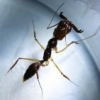Pics...











YJK
This is definitely not Camponotus chromaiodes. If anything, they seem to be Camponotus americanus. Could you possibly post some close ups of the queen and all the info required for an ID? That would help me out a lot.
Currently Keeping:
Trachymyrmex septentrionalis
Pheidole pilifera
Forelius sp. (Monogynous, bicolored) "Midwestern Forelius"
Crematogaster cerasi
Pheidole bicarinata
Aphaenogaster rudis
Camponotus chromaiodes
Formica sp. (microgena species)
Nylanderia cf. arenivega
This is definitely not Camponotus chromaiodes. If anything, they seem to be Camponotus americanus. Could you possibly post some close ups of the queen and all the info required for an ID? That would help me out a lot.
Camponotus americanus are orange. I agree this is C. chromaiodes, if not Camponotus novaeboracensis.
Hit "Like This" if it helped.
This is definitely not Camponotus chromaiodes. If anything, they seem to be Camponotus americanus. Could you possibly post some close ups of the queen and all the info required for an ID? That would help me out a lot.
I have them IDed by many people on the FaceBook community. They all said chromaiodes.
YJK
This is definitely not Camponotus chromaiodes. If anything, they seem to be Camponotus americanus. Could you possibly post some close ups of the queen and all the info required for an ID? That would help me out a lot.
I have them IDed by many people on the FaceBook community. They all said chromaiodes.
Okay. Don't these look kind of reddish-orange and black/brown to you? I think I may be getting confused because I am colorblind ![]()
Currently Keeping:
Trachymyrmex septentrionalis
Pheidole pilifera
Forelius sp. (Monogynous, bicolored) "Midwestern Forelius"
Crematogaster cerasi
Pheidole bicarinata
Aphaenogaster rudis
Camponotus chromaiodes
Formica sp. (microgena species)
Nylanderia cf. arenivega
This is definitely not Camponotus chromaiodes. If anything, they seem to be Camponotus americanus. Could you possibly post some close ups of the queen and all the info required for an ID? That would help me out a lot.
I have them IDed by many people on the FaceBook community. They all said chromaiodes.
Okay. Don't these look kind of reddish-orange and black/brown to you? I think I may be getting confused because I am colorblind
They look exactly like Chromaiodes ![]()
0 members, 1 guests, 0 anonymous users